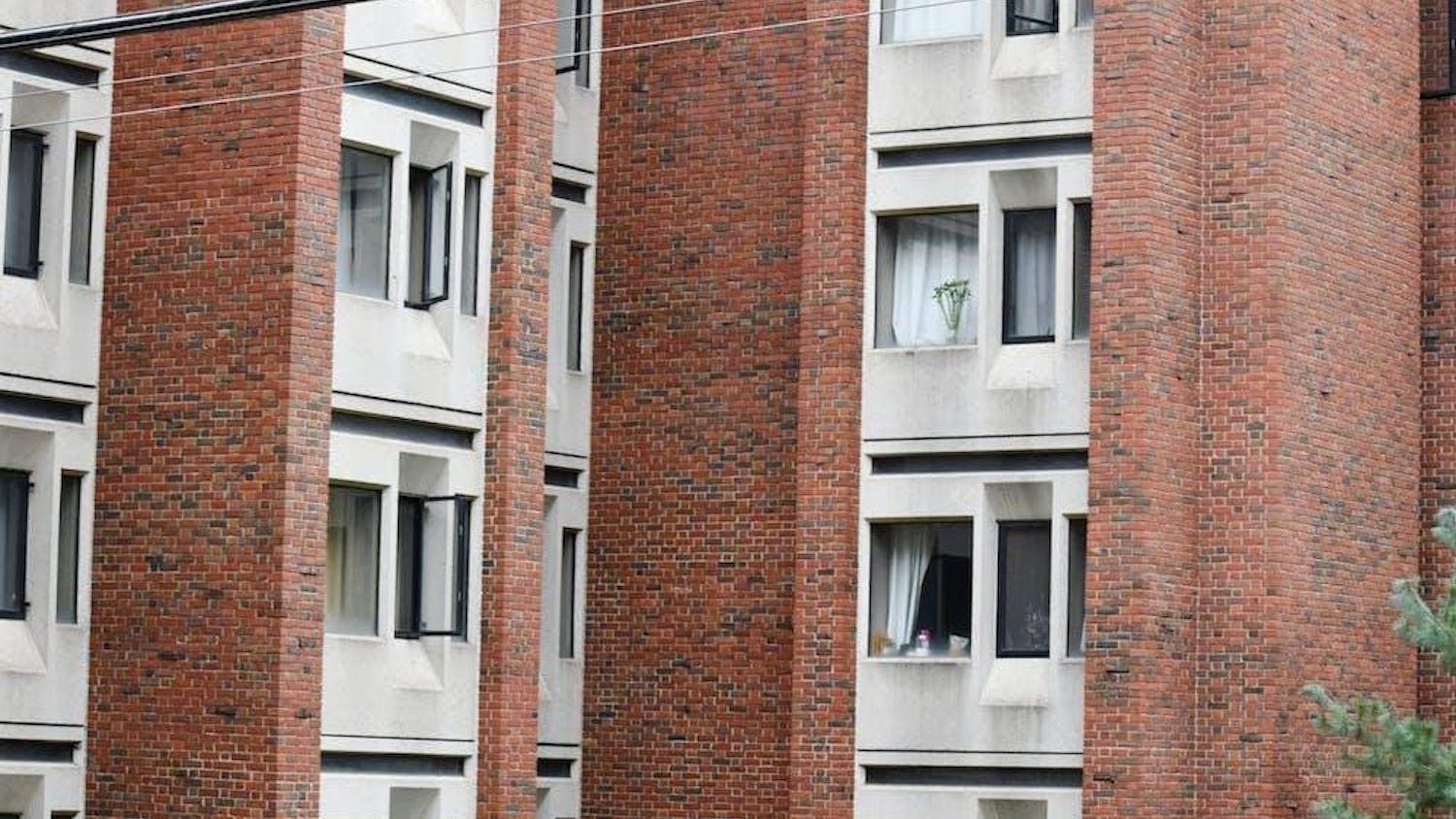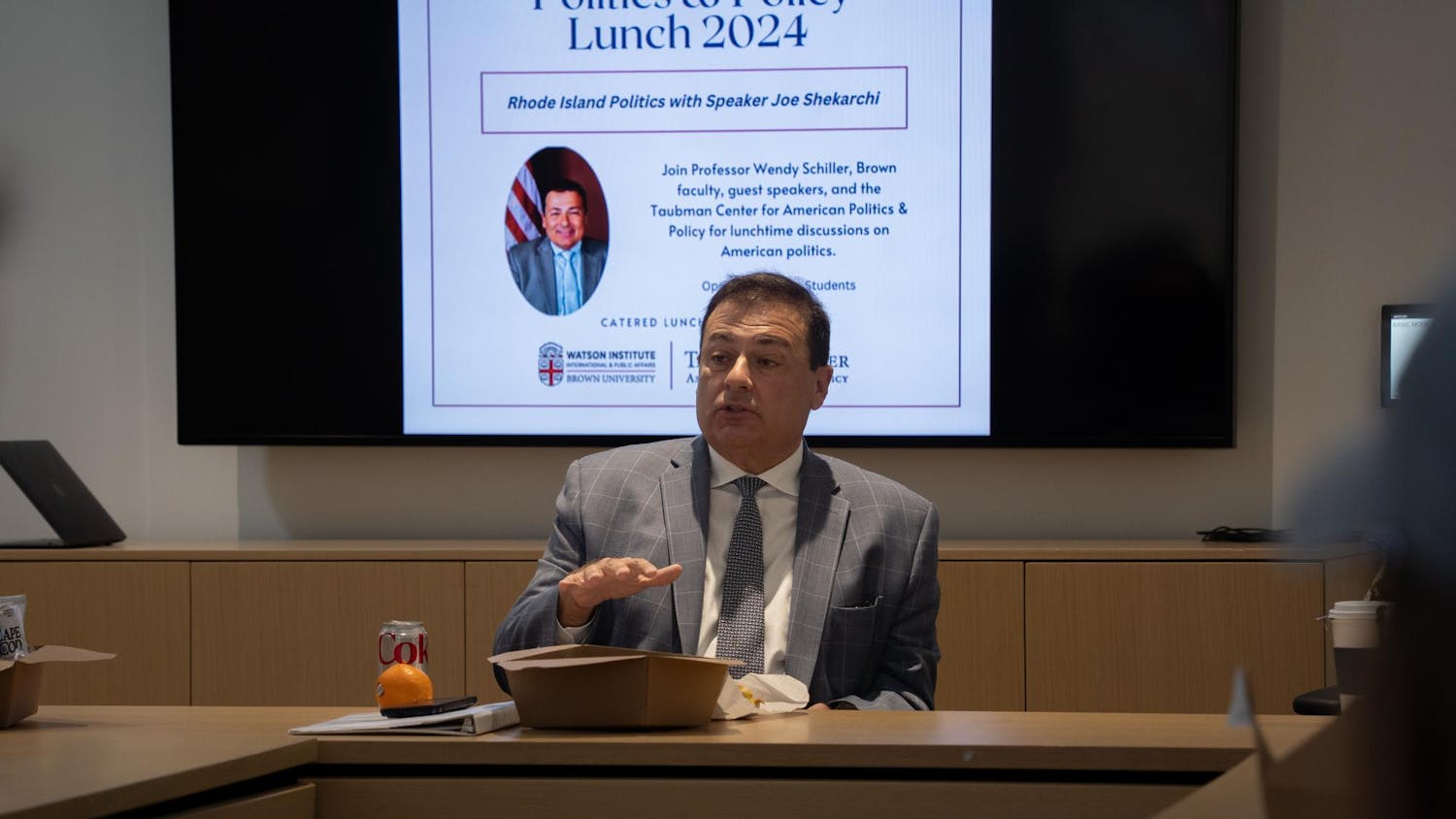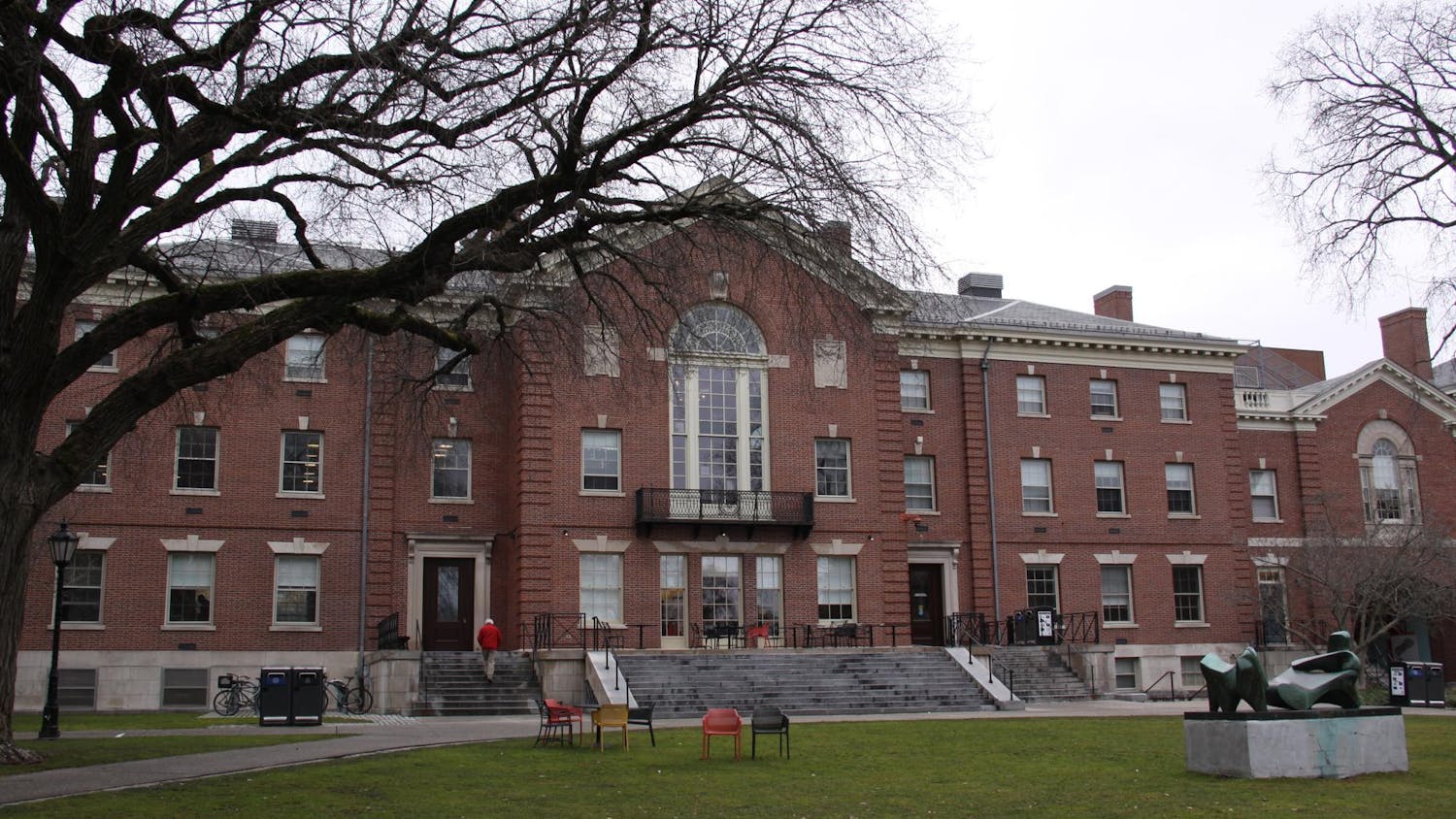The primary election was only three days away, so when a woman started running toward Jennifer Lawless in a grocery store parking lot yelling, "Don't worry," the then-candidate assumed it was an expression of good luck. Then the woman got close enough to finish her sentence. "Don't worry," she said, "you don't look nearly as fat in real life as you do on TV."
That was in 2006, when Lawless was an assistant professor of political science at Brown and running to represent Rhode Island in the U.S. House of Representatives. Now the director of the Women & Politics Institute at American University, she recounted this story during a speech in Salomon 101 yesterday as an example of the different standards applied to female political candidates.
A crowd of around 60 attended Lawless' lecture on why women rarely run for office, which was co-sponsored by the political science department and the Taubman Center for Public Policy and American Institutions.
Lawless presented the issue of female underrepresentation in U.S. political office as a three-pronged problem stemming from greater family responsibilities, self-perceptions and lack of external encouragement. She conducted polls in 2001, 2008 and 2011 among professionals in fields she determined to be likely gateways to government. Based on the results, Lawless argued that the principal obstacle to greater gender parity in American politics is a chasm in motivation to enter the field.
"All of this is about political ambition — the gender gap in political ambition," she said.
Eighty-three percent of Congress is male, as well as 88 percent of state governors, and the U.S. ranks 90th in the world in terms of female representation in its legislature.
Lawless dismantled some false assumptions about the factors underlying such statistics, noting that the public is receptive to female candidates, and those who run are just as successful as men at fundraising and ultimately winning.
"The men and women that we surveyed and interviewed on paper look exactly the same," Lawless said, "yet 55 percent of the women compared to only 35 percent of the men had never considered running for office."
For working women with families, "the notion of running for office becomes a pretty unattractive third job," Lawless said. And women who choose to wait until their kids are grown start too late to attain any high office, given the career ladder nature of American politics, she said.
Lawless compared the problem of self-perception to gender dynamics at universities. Citing a poll finding that about half of men who considered themselves unqualified had also thought about running for office, she argued that unfounded confidence can also be found in the classroom, where male students are more willing to talk about subjects they do not know well or opine on articles they have not read.
Lawless's ultimate conclusion was that the only immediately rectifiable issue is lack of encouragement. "We have to actively recruit more women to run for office," she said. "Having women in positions of power matters both substantively and symbolically."
Referencing the push over the past few decades to increase the number of women in math and sciences, she argued that such a change is possible — and crucial for good government. "When you have women involved, you tend to get more deliberation, more debate and greater consensus," she said.
Audience members questioned Lawless about the roles of socioeconomic status and education in influencing women. Caroline Sagalchik '13, referencing Lawless's argument that female candidates have to conform to a physical and emotional norm more than men do, asked, "Is it possible that women just have a reluctance to change their image?"
Lawless responded that though prospective candidates might not be aware of such demands, they exert a major influence. She used the paradigm of "parade wear," in which male candidates have a simple, proscribed outfit but women lack a good option.
"There's no equivalent to khakis and a polo shirt — because until recently there wasn't even a bathroom in the House of Representatives for women," she said.
Sagalchik told The Herald she was inspired to ask the question because of a childhood dream. "When I was younger, I was the kind of person that thought I would go into politics," she said. But because the idea of a life predicated on image didn't appeal to her, Sagalchik "completely did an about-face," she said.
The lecture, though, made Sagalchik reconsider. "The disparity is pretty impactful, so maybe I'll change my mind," she said.
Wendy Schiller, associate professor of political science and public policy, who organized the lecture and used her research funds to pay for it, said Lawless fills a gap in the discourse on women and politics on campus. Though the presidents of both the University and the Undergraduate Council of Students are female, Schiller noted that many of the department chair and faculty governance leadership positions are held by males.
"I think that there are ways in which the gender issues can be problematic in academia, but they are not easily measured," Schiller said.




